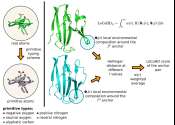First direct evidence that a mysterious phase of matter competes with high-temperature superconductivity
(Phys.org)—Scientists have found the first direct evidence that a mysterious phase of matter known as the "pseudogap" competes with high-temperature superconductivity, robbing it of electrons that otherwise might pair up ...








